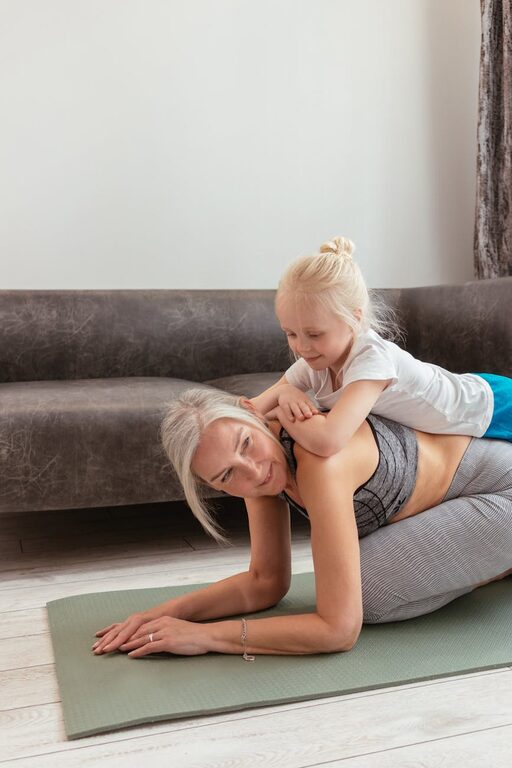Stretching is a simple yet powerful way to improve your overall health and well-being. Whether you’re new to exercise or looking to add some gentle movement to your daily routine, stretching at home can help increase flexibility, reduce muscle tension, and enhance your energy levels. This beginner’s guide will walk you through everything you need to know to start stretching safely and effectively.
Why Stretching Matters
Before diving into specific stretches, it’s helpful to understand why stretching is important:
– Improves Flexibility: Regular stretching helps lengthen muscles and tendons, giving you greater range of motion.
– Enhances Circulation: Stretching increases blood flow to muscles, which may speed up recovery and reduce soreness.
– Reduces Stress and Tension: Gentle stretching can relax the nervous system and relieve tightness caused by stress.
– Prepares Your Body: Stretching warms up muscles before activities and promotes better posture and balance.
Preparing to Stretch at Home
To get started, you don’t need special equipment or a large space. Here are some tips to create a good stretching routine at home:
– Wear Comfortable Clothes: Loose, breathable clothing allows unrestricted movement.
– Choose a Quiet Spot: Find a peaceful area without distractions where you can focus.
– Use a Mat or Soft Surface: This helps cushion your body and provides better grip, especially for floor stretches.
– Set Aside Time: Aim for 10–20 minutes, 3–5 times a week to see steady improvement.
– Hydrate: Drink water before and after stretching to keep muscles hydrated.
Stretching Basics: How to Stretch Safely
Keeping safety in mind will make stretching more enjoyable and effective. Follow these simple guidelines:
– Warm Up First: Stretch after light activity like walking or marching in place for 3-5 minutes to increase muscle temperature.
– Move Gently: Stretch slowly until you feel mild tension, not pain.
– Hold Your Stretch: Maintain each position for 20–30 seconds and breathe deeply.
– Avoid Bouncing: This can cause muscle strain or injury.
– Stretch Both Sides: Give equal attention to both sides of your body.
– Listen to Your Body: If a stretch hurts or causes discomfort, ease off or try a modified version.
Beginner-Friendly Stretches to Try at Home
Here are some gentle stretches you can do daily to target major muscle groups:
1. Neck Stretch
– Sit or stand upright.
– Slowly tilt your head to the right, bringing your ear toward your shoulder.
– Hold the position and breathe for 20 seconds.
– Repeat on the left side.
2. Shoulder Rolls
– Stand or sit with back straight.
– Raise your shoulders toward your ears.
– Roll them backward in a circular motion 10 times.
– Repeat the same rolling forward.
3. Chest Opener
– Stand tall with feet hip-width apart.
– Clasp your hands behind your back and straighten your arms.
– Gently lift your chest and squeeze your shoulder blades together.
– Hold for 20–30 seconds.
4. Cat-Cow Stretch (Spine Mobility)
– Begin on hands and knees in a tabletop position.
– Inhale and arch your back, lifting your head and tailbone (Cow).
– Exhale and round your spine, tucking your chin and pelvis (Cat).
– Repeat slowly 10 times.
5. Seated Hamstring Stretch
– Sit on the floor with one leg extended and the other bent, foot against the inner thigh.
– Reach toward the toes of the extended leg, keeping your back straight.
– Hold the stretch for 20–30 seconds.
– Switch legs and repeat.
6. Standing Quadriceps Stretch
– Stand near a wall or chair for support.
– Bend one knee, bringing your heel toward your buttocks.
– Hold your ankle with the same-side hand.
– Keep your knees close together and hips level.
– Hold for 20 seconds, then switch sides.
7. Calf Stretch
– Stand facing a wall with both hands pressed on it.
– Step one foot back, keeping it flat on the floor.
– Lean forward slightly to feel the stretch in your calf muscle.
– Hold for 20 seconds and switch sides.
Tips to Stay Consistent
Building a stretching habit takes a little effort, but these tips can make it easier:
– Set Reminders: Schedule your stretching time like any other appointment.
– Combine with Other Activities: Stretch while watching TV or after a shower.
– Track Your Progress: Note improvements in flexibility or how your body feels.
– Make It Enjoyable: Play soothing music or practice deep breathing alongside stretches.
– Invite a Friend or Family Member: Stretching together can keep you motivated.
When to Consult a Professional
If you have specific health conditions, chronic pain, or injuries, it’s wise to check with a healthcare provider or physical therapist before starting a new stretching routine. They can provide personalized guidance to ensure your stretches are safe and effective.
Final Thoughts
Stretching at home is a wonderful way to care for your body and ease into a more active lifestyle. With just a few minutes a day, you can improve flexibility, reduce muscle tension, and feel more relaxed and energized. Remember to be patient and consistent—your body will thank you over time.
Happy stretching!

